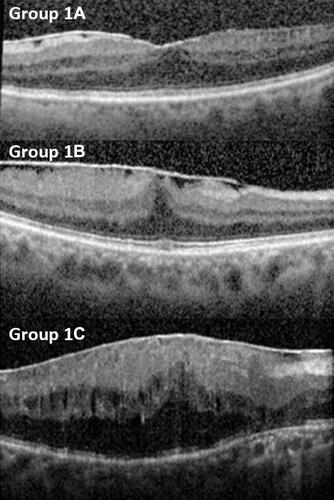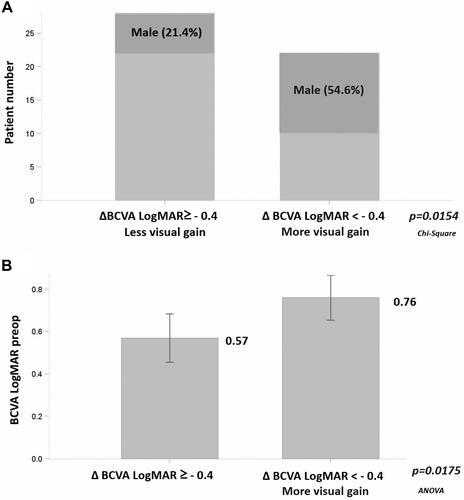Figures & data
Figure 1 Fovea-attached type ERM can be classified as Group 1A: ERM with mainly outer retinal thickening and maintained a nearly normal configuration, Group 1B: more exaggerated tenting of outer retinal layer in the fovea area and inner retina distorted by centripetal and anteroposterior forces due to ERM, and group 1C: prominent inner retina thickening with inward tenting of the outer retinal reflectivity in the foveal area. Group 1A and 1C are globally adherent to the retina, while Group 1B is focally adherent.

Table 1 Patient Postoperative Demographics
Table 2 ANOVA ERM Subgroup Analysis
Table 3 Multivariate Models for Predicting Operation Outcome

